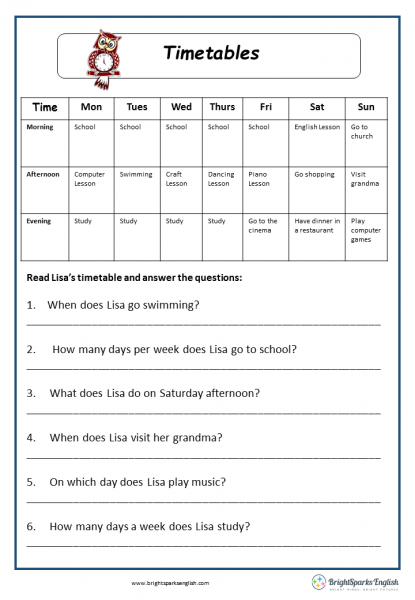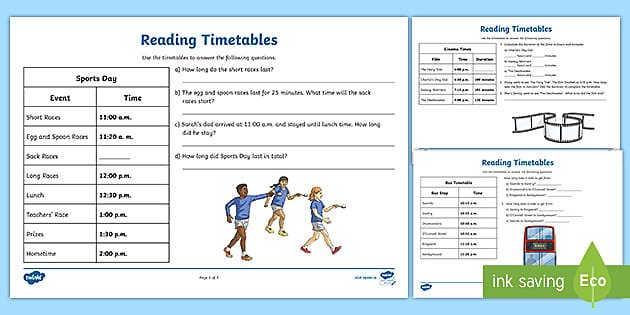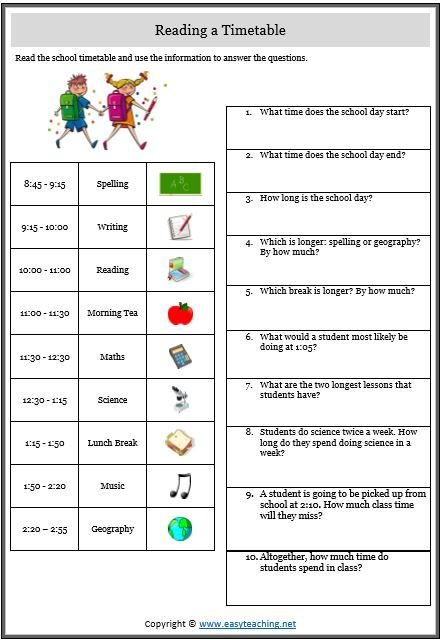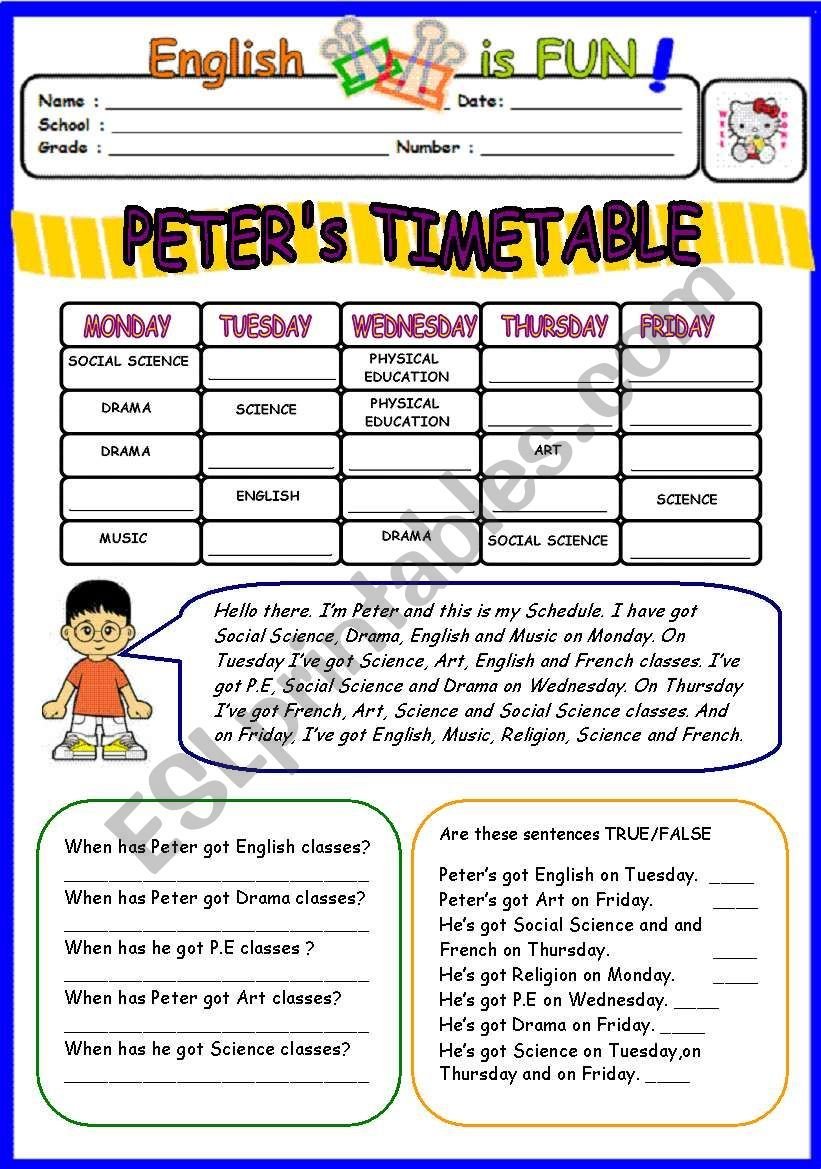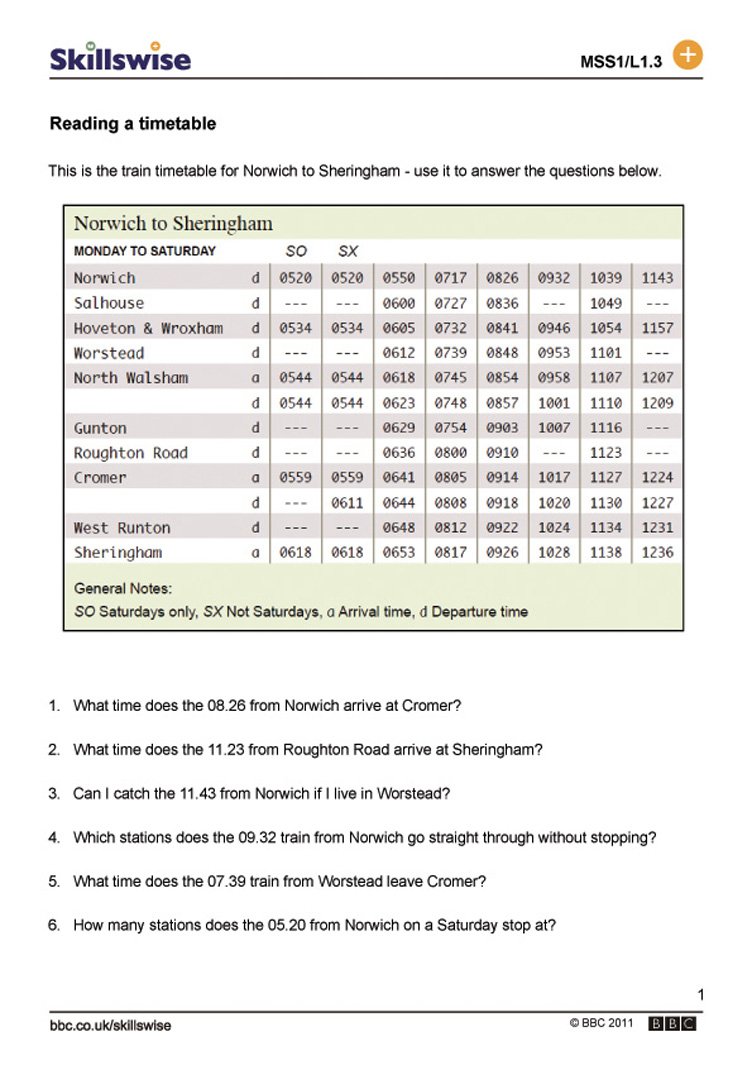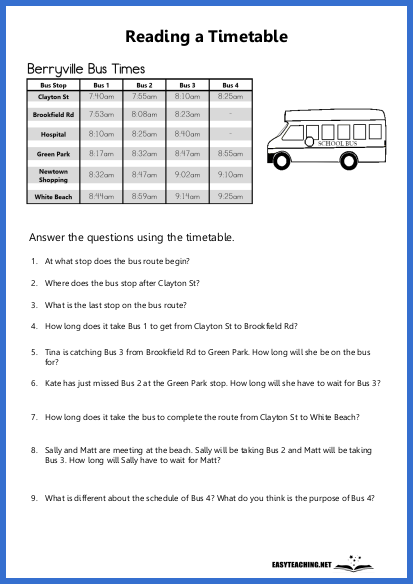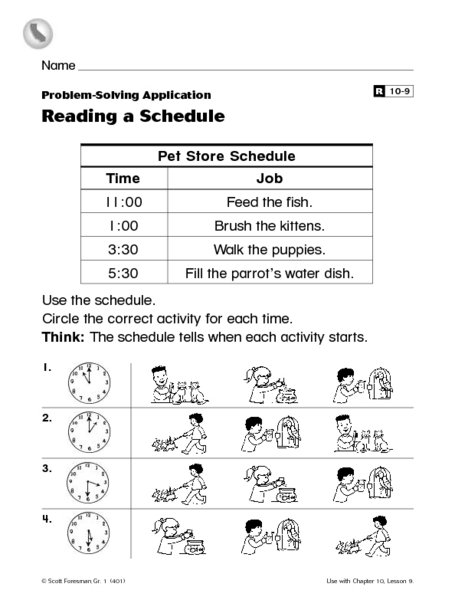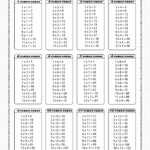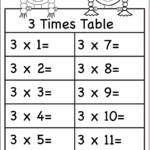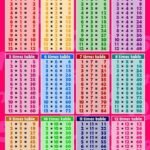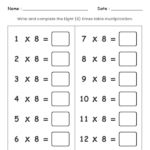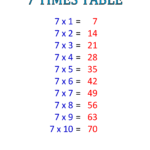Introduction
In this article, we will provide you with detailed information on Reading Timetables Worksheets. These worksheets are designed to help you improve your skills in reading and interpreting timetables. By using easy-to-understand language, simple sentences, and everyday words, we aim to make the learning process easier for you.
What are Timetables?
Timetables are schedules or charts that display a list of events or activities along with their corresponding times. They are commonly used to plan and organize various tasks, such as transportation schedules, school timetables, or event programs.
Reading Timetables Worksheets
These worksheets are specially designed to help you practice reading and understanding timetables effectively. By following the tips below, you can make the most out of these worksheets:
1. Use Direct Word Order
Make sure to arrange the words in a subject + verb + complements order to ensure clarity and simplicity. For example, instead of saying “The bus to the city will be taken by me,” you can say “I will take the bus to the city.”
2. Avoid Passive Voice
Passive voice can make sentences more complex and difficult to read. Try to use active voice whenever possible. For example, instead of saying “The train was boarded by the passengers,” you can say “The passengers boarded the train.”
3. Explain Difficult Words
If you come across any difficult words in the timetables, take the time to explain their meanings. This will help you better understand the information provided. For instance, if you encounter the word “departure,” explain that it means the act of leaving or going away.
4. Avoid Impersonal Sentences
Impersonal sentences can make the content harder to comprehend. Instead, use personal pronouns like “I,” “you,” or “we” to make the information more relatable and engaging.
5. Avoid Complex Terms and Acronyms
To ensure easy comprehension, avoid using technical terms or acronyms that may be unfamiliar to the reader. If you need to include any specific terms, make sure to explain them in simple language.
6. Avoid Foreign Words
Foreign words can create confusion and make the content more challenging to understand. Stick to everyday words that are commonly used in the language you are writing in.
7. Avoid Figures of Speech
While figures of speech may add creativity to your writing, they can also confuse the reader when it comes to interpreting timetables. For clarity, it’s best to use straightforward and literal language.
By following these guidelines, you can make the most out of your Reading Timetables Worksheets. Remember to practice regularly and seek help whenever needed. Happy learning!
Timetables English Reading Worksheet English Treasure Trove
Reading Timetables Worksheets
Free Worksheets To Practise Reading Timetables
Reading A Schedule Worksheets
Reading A Schedule Worksheet
Teaching Reading Timetables Ks2
Reading A Schedule Worksheet For 1st
